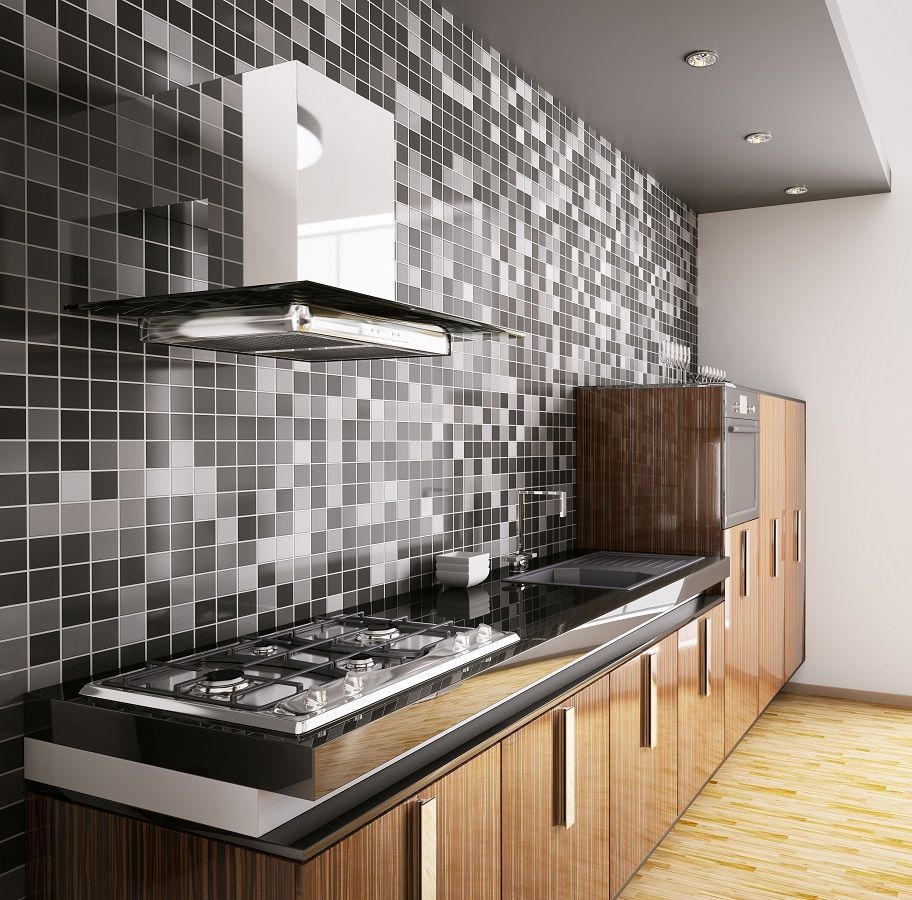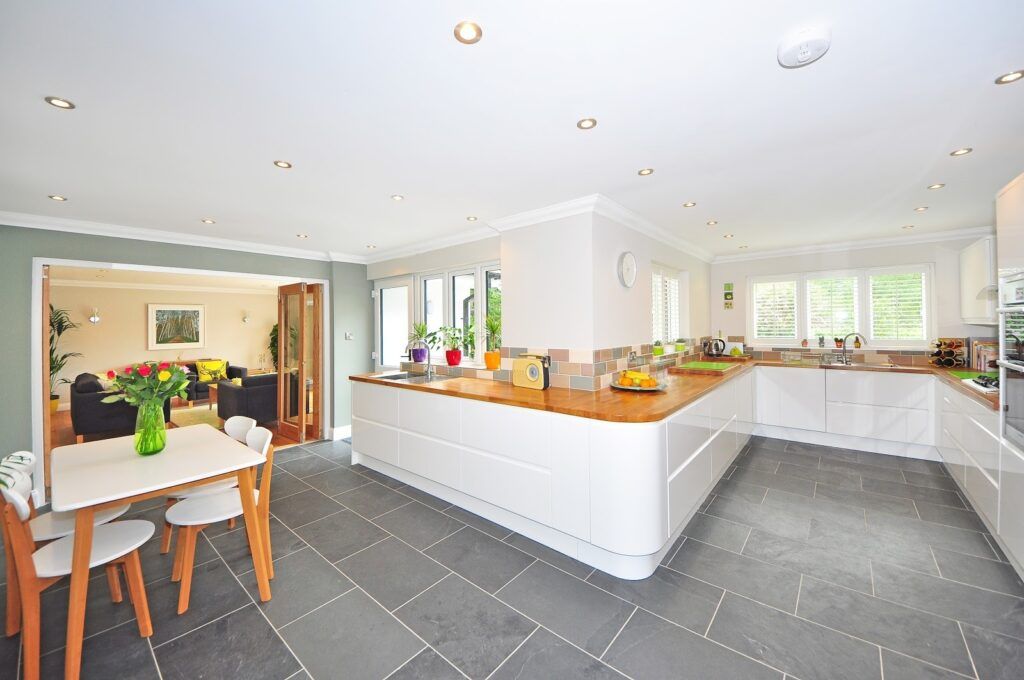Throughout your tiling career, you will likely find yourself working with lots of different kinds of tiles: from weak ceramic tiles to thick ceramic tiles, to heavy duty porcelain tiles. They all cut in slightly different ways, and so you need the power of professional tile cutters to do the job properly.
Whether you are a seasoned pro or an enthusiastic DIYer, don’t let a fine tiling job be let down by the quality of the cuts. The eye will always be drawn to those rough edges, regardless of how good the rest of the tiling is.

If you’re unsure which tools you will need to cut tiles, check out our guide to kitting yourself out for tiling which covers all of the basics. Cutting tiles is crucial to achieving a professional finish on your tiling jobs – we recommend spending as much as you can stretch to on the best tools.
‘Professional tile cutters are professional tools for professional people’
So what are the different types of tile cutting tools you might use?
Manual tile cutters
Manual cutters are fine, they usually feature a solid bed on which to lay the tile. Markings on the perimeter help with accurate measurements. A roller with a scoring wheel then runs across the tile and you simply snap off the excess. Very hard tiles are prone to cracking away from the score. The wheels need to be replaced regularly to keep them making a deep enough score.
If you’ve never used a manual tile cutter before, check out the below video in which Darren demonstrates how easily you can cut through all manner of tiles, from ceramic wall tiles, to 9mm thick wall tiles, to 10mm thick, 600mm long, heavy duty porcelain tiles.
Even though this tile cutter is manual, it’s incredibly powerful, so much so you can operate it with just the lightest touch from your little finger. For cutting more heavy duty tiles, you simply switch out the blade for a more heavy duty one.
You can even use manual cutters to cut your tiles at an angle.
Electric tile cutters
You could also use electric cutters to shape your tiles, and while these vary in style they essentially all work the same way. Tiles are fed past a fast spinning blade, cooled by water, which cuts all the way through the tile.
Avoid cheap electric cutters. The blades will be made from poor quality metal and unlikely to be true as they spin. A good quality cutter spins extremely quickly and has a very sharp, hard wearing blade. A word of warning – these are extremely messy and best set up outside.
Angle grinder
A mini angle grinder can also be used to cut tiles. Quality diamond blades should be used. These are particularly useful for cuts with internal angles and creating more unusual shapes for awkward spaces. Again, avoid using low quality blades, these are a false economy with the amount of mis-cuts they are likely to produce.
Electric drill
For making holes to neatly sit around pipes, only the best tools will ensure a perfect finish. A powerful electric drill with a carbide-grit hole saw will produce the best possible results.
It’s possible to cut a tile to shape and then splice it back together after cutting, but the end result will be far inferior to a neat hole. If you are tackling a one-off tiling project, it may be possible to hire the hole saw kit rather than go to the expense of buying one.
You could also tackle tiling around a pipe project with a masonry bit and a ceramic coping saw, if both are sharp and you take your time.
Measuring and marking
The cuts and holes you make on your tiles will only be as good as the measurements you use. A good old tape measure and spirit level are perfectly acceptable of course, but for precision work, use laser markers and measures – leave nothing to chance.
With holes, it’s worth testing your marks with a tile sized paper template before committing to cutting the hole. The same applies to awkward angles and tight spaces. The old adage, ‘measure twice, cut once’ should always be kept in mind.
UK Pro Tiling Training
As long as you know how to use your tile cutters (which you are taught to do on all UK Pro Tiling Training courses), you can cut any tile. But remember, you’re only as good as your tools, and if your tools aren’t capable of doing the job, then you’re going to struggle.
UK Pro Tiling Training retail a range of different kinds of tile cutters, including Rubi and Sigma, but the one you see in the above video is the one that you’ll learn to use on our tiling courses. We also sell three different starter kits for anyone doing a tiling course. The prices are very competitive compared to a tiling shop.
Check out some of our other tiling videos and watch the various courses in action – you’ll see the students getting to grips with all the various tile cutters.
For all of your tile training courses, whether you simply need a refresher, or are starting from scratch, get in touch today and start your journey towards becoming a tiling expert.
 Trade shows are a fabulous way of finding out about new products on the market, attending product demonstrations and seminars, meeting the manufacturers of, for example, tiles, tooling and adhesives.
Trade shows are a fabulous way of finding out about new products on the market, attending product demonstrations and seminars, meeting the manufacturers of, for example, tiles, tooling and adhesives.
 Modern ebony wood kitchen with sink,gas cooktop and hood interior 3d
Modern ebony wood kitchen with sink,gas cooktop and hood interior 3d Moving away from the big commercial tile manufacturers, there is an increasing demand for ‘artisan’ tiles. Tiles that are not mass produced, that offer very individual style, often are handmade or have a reclaimed element to them. Artisan tiles can offer a more bespoke design, with different textures and tones that can’t be achieved on a mass scale. The colours that look to be on trend for 2020 in this sector of the tile industry are warm, metallic tones and earthy greens and browns – again a darker, naturally inspired colour palette.
Moving away from the big commercial tile manufacturers, there is an increasing demand for ‘artisan’ tiles. Tiles that are not mass produced, that offer very individual style, often are handmade or have a reclaimed element to them. Artisan tiles can offer a more bespoke design, with different textures and tones that can’t be achieved on a mass scale. The colours that look to be on trend for 2020 in this sector of the tile industry are warm, metallic tones and earthy greens and browns – again a darker, naturally inspired colour palette.